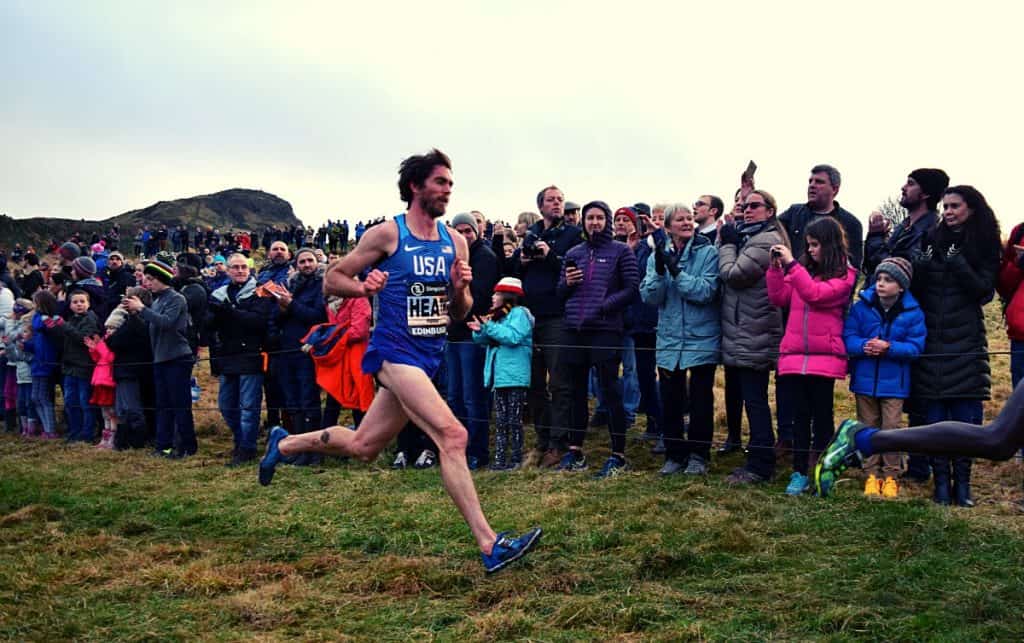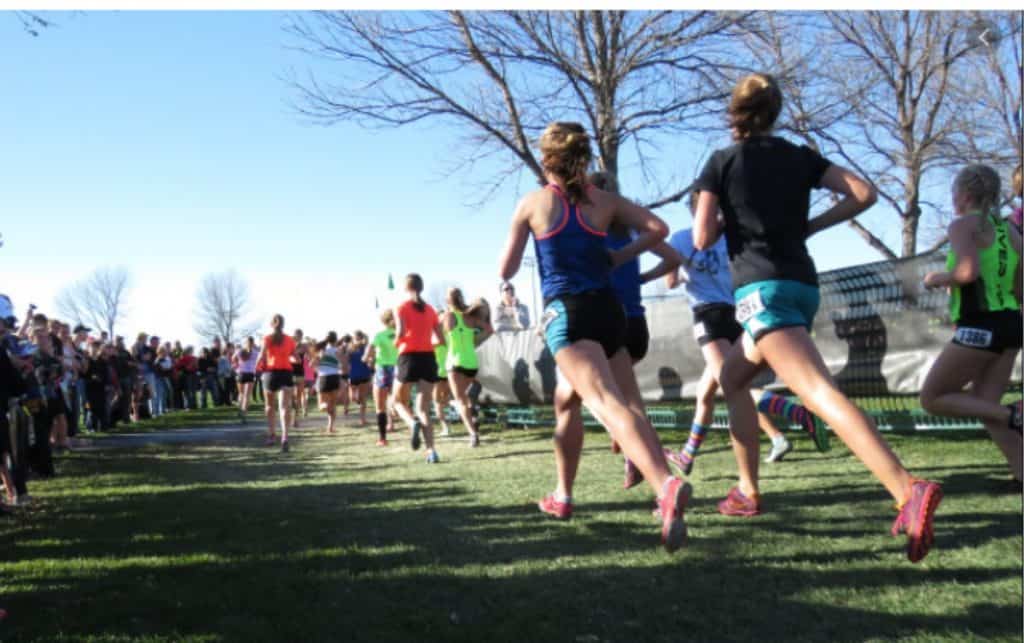Cross Country Running Guide: What It Is, How to Train
Cross country running – abbreviated as XC running – is a form of racing that takes place in natural, open-air environments – it arose in the UK but is popular worldwide, especially in schools and athletics clubs. If the very sound of the word cross country fills you with dread, then perhaps it takes you back to those miserable wet and cold experiences from your school sports classes.
In fact, even for a lot of experienced and accomplished runners over the road and track, the very thought of toeing the starting line of a cross country race would be equally unappealing. It´s a bit like Marmite in a way – you either love it or you hate it!
Some of the top endurance athletes over the years have included cross country races as part of their winter training plan – Paula Radcliffe, Paul Tergat, Kenenisa Bekele, and Steve Ovett.
However, many others avoided the cross-country season, notably Sebastian Coe, Haile Gebrselassie and in later years Mo Farah.
In this article, we’re going to get into:
- What is Cross Country Running?
- The background and history of Cross country
- Jargon and peculiarities of Cross Country Running
- How to train for a XC Running Race
- XC Running Strategies and Tips
Ready?
Let’s jump in!

Mục Lục
What Is Cross Country Running (XC Running)?
Cross country running involves races which are usually run over undulating courses, mostly on grass in parks and forests.
The distance of the race depends on the age-group but normally ranges from 4km to 12km. They normally take place during the autumn and winter seasons.
Some of the biggest races in the cross-country calendar include World Cross Country Championships, NCAA Cross Country, and The English National Cross-Country Championships.

The World Cross Country Championships
The pinnacle of the cross-country season for elite athletes is undoubtedly the annual World Cross Country championships.
The event is steeped in history and after his victory in 1978, a majestic and remarkable performance by John Treacy of Ireland winning on home soil in the 1979 edition held in Limerick sparked a passion for the sport for many an Irish athlete in the succeeding decades.
In recent years, the African countries of Ethiopia and Kenya have dominated in both the male and female races. The senior men´s team race has been won by Ethiopia or Kenya every year since 1981. In the women´s race, the only other nation to have won the team race since 1991, was Portugal in 1994.
In the case of Paul Tergat, his dominance over the country was unrivaled during the mid to late 90s. He was a 5-time winner, but despite this, he failed to win Olympic gold in the 10,000, as he was unable to overcome his nemesis Haile Gebrselassie, from Ethiopia.
Even the foot and mouth disease in 2001 didn´t stop the event as the organisers switched the cross country running event from Dublin to Ostend in Belgium.
The NCAAs every year is the biggest race in the American collegiate system and has produced some famous winners over the years: Steve Prefontaine (1971), Dathan Ritzenheim (2003), Galen Rupp (2008), and Shalane Flanagan (2002,2003).
The English National Cross Country was an incredible event during the 70s and 80s, with fields of over 2,000 runners. The opening 400m felt like a stampede on a battleground as plucky and courageous runners ran their hearts out for their local running clubs.
Cross Country Running: Jargon and Unusual Aspects

1. Every person counts
This is probably where cross country running distinguishes itself from the individualistic nature of track racing and road racing. You are not only running for yourself as you try and place as high up the field as possible, but you are counting towards your team´s score.
The scoring system works by aggregating the positions of all your counters (i.e the first 4 or 6 of your runners across the line who count towards your team score).
2. Countback
Another term that is commonly heard on the cross country running course is the countback rule. This is applied when 2 or more teams have the same points, and the winning team is determined by comparing the position of their final counter.
For instance, imagine Team A had runners in positions 1, 5, 7, 10 and Team B had 2, 4, 8, 9. In both cases, the team points total is 23. However, the winning team would be Team B as their final counter was in 9th position and ahead of the final counter from Team A.
Despite only 4 runners counting towards the team points, the other runners can push the final counters of the other teams down the field and so it is extremely important to finish as high up the field as you can even though you don’t think you´ll count towards your team points total.

3. Mixed terrain
Undulating would best describe a typical course. While most modern cross-country races are held in large expansive parks, a number of unusual aspects featured in the traditional races in the past.
It would have been common to expect a number of small ditches to jump over, sand covered sections of the course, and in Ireland a favourite was having to wade through a small stream after running diagonally across a ploughed field.
Most courses will leave runners muddy from head to toe and may include some cambers – sloped parts of the course where you feel that you are running on our side.
How To Train For Cross Country Running

Most cross country running races range from 8km-12km for men and from 6-10km for women.
All these distances are predominantly aerobic. If you go off too fast you will incur an oxygen debt and lose ground rapidly in the latter stages of the race.
There is nothing worse than being passed by numerous runners over the last part of a cross-country race.
So, the ability to run well over 10km is a key factor in cross country success. If we look the at winners of the men´s WWCC over the last two decades, they all have 10k personal bests times under 27 minutes 15 seconds! This ability is not produced by solely running 90-100 miles a week but is a result of structured training at specific paces.
Using a recent performance or predicted race pace can be used to help you to determine how to structure your training:
How To Train Based on known 10km pace

If you have a 10km time from a recent race, take the time and calculate the time per 400m. For example, you ran 35 minutes for a 10k a month previously. This equates to 3.30 per km/5.36 per mile and 84 secs per 400m.
A typical week based on this known 10k time would include:
- Long run at your marathon pace (Add 8-10 secs per 400m to your 10k time, i.e., 92-94 seconds per 400m.
- 4 x 1600m or 5 x 1k at 5K pace (Subtract 4 secs per 400m from your 10k time) with 90 seconds recovery, i.e., 80 secs per 400m
- A session at your 3k pace (8 seconds per 400m quicker than your 10km pace) – 12 x 400m with 45 secs recovery or 5 x 600m with 90 seconds recovery
- Include 2-3 recovery runs of 30-45 minutes between these harder sessions.
Note that Cross-country races are not always run on the flat. So, you should also try and incorporate hill running into your weekly plan, either as a session to replace one of the above or as part of your long run.
In summary, the best way to make the most of your training is to use a logical and structured approach. Moreover, you should add some progression into your training and a gradual increase of 10% over a 2-month period would be sufficient.
XC Running Race Strategies

Another important factor is the length of spikes. This will depend on the state of the course, how firm the ground is, and how much rain there has been in the days prior to the race. A good tactic is to do a “recce” of the course beforehand (perhaps get there a few hours before the start and walk around the loop).
Also, it is advisable to get used to running in spikes to get the feel of the grass and mud. You can do this once per week and may choose to run your weekly 10k pace or 5k pace session on the grass.
If a rival has been hanging on to you all through the race and you are getting tired, it is probable that the other person is also getting tired. Or you could use the old trick that was passed down by my grandfather.
Turn to the other runner and ask them “Do you think the pace is a bit slow, maybe we should push on?”
This often fools the other person into thinking you are fresher, and it will give you a psychological boost and help you to push on with greater purpose in the later stages of the race.
When going to a cross country running race bring a black bin liner to put in the layers of clothing that you used in your warmup. This is an old favourite of the Irish cross country teams as it´s not uncommon for the heavens to open during the race and the last thing you want is your clothing to be soaked after your finish.
Finally, after the race, take stock when looking at the results. You should remember the person who finished just ahead of you. That person is a future scalp to collect.
shares















![Toni Kroos là ai? [ sự thật về tiểu sử đầy đủ Toni Kroos ]](https://evbn.org/wp-content/uploads/New-Project-6635-1671934592.jpg)


